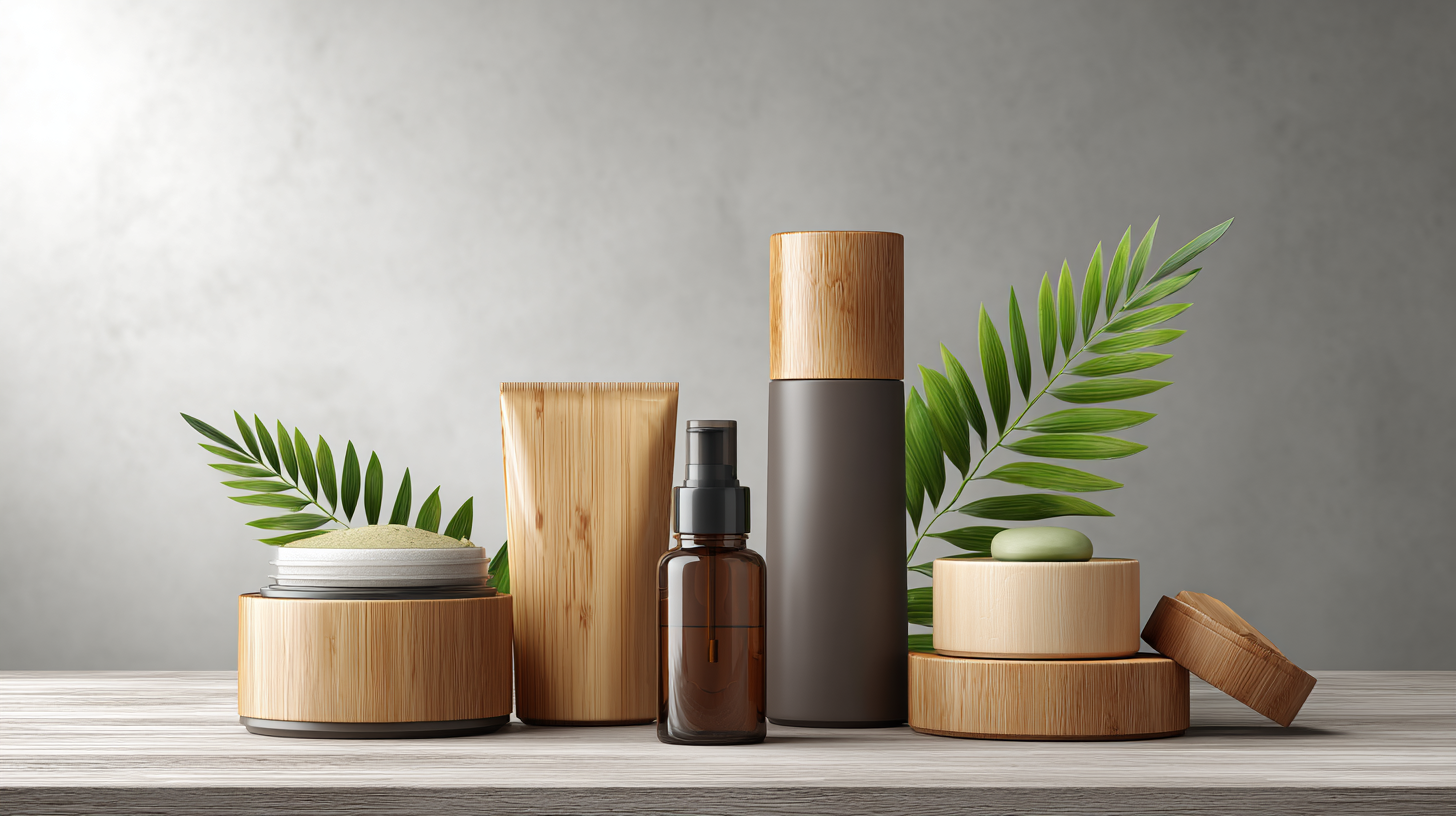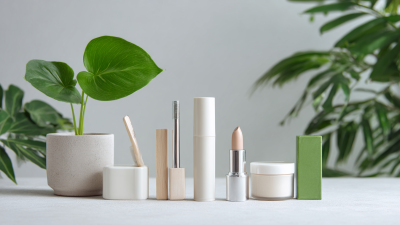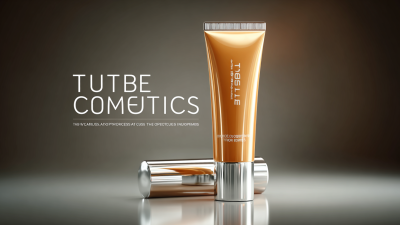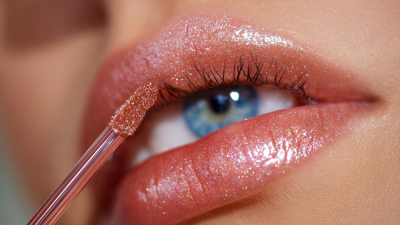
Exploring the Rise of Eco Friendly Cosmetic Packaging at the 138th Canton Fair 2025
As the global beauty industry increasingly prioritizes sustainability, the focus on Eco Friendly Cosmetic Packaging has gained unprecedented momentum, particularly in events like the 138th Canton Fair in 2025. According to a report by Grand View Research, the eco-friendly packaging market is projected to reach $1.1 trillion by 2027, reflecting a 5.7% CAGR from 2020. This shift not only signifies changing consumer preferences but also underscores the necessity for brands to adapt to environmentally conscious practices. Recent studies indicate that 67% of consumers are willing to pay more for products with sustainable packaging, highlighting a strong market demand for eco-friendly innovations.

The Canton Fair serves as a pivotal platform for industry players to showcase cutting-edge sustainable packaging solutions, aligning with the growing consumer expectation for transparency and ecological responsibility. As we explore this transformative trend, it's clear that Eco Friendly Cosmetic Packaging is not merely a passing fad but a vital component of the future of cosmetics.
The Growing Demand for Eco-Friendly Packaging in the Cosmetics Industry
The growing demand for eco-friendly packaging in the cosmetics industry has reached a critical point, driven by increasing consumer awareness and regulatory pressures. According to a recent report from Grand View Research, the global eco-friendly cosmetics market is expected to grow at a CAGR of 9.7% from 2022 to 2030. This surge is largely attributed to consumers prioritizing sustainability, as 70% of shoppers indicate they prefer brands that utilize environmentally responsible packaging. The cosmetics sector, in particular, is under scrutiny, with traditional plastic packaging contributing significantly to environmental pollution.
At the 138th Canton Fair 2025, industry leaders are spotlighting innovative bio-based and biodegradable packaging solutions that not only reduce ecological footprints but also enhance brand image. A survey by Packaged Facts reveals that 58% of consumers are willing to pay more for eco-friendly packaging, highlighting a lucrative opportunity for brands to align their values with those of environmentally conscious consumers. As manufacturers explore alternatives such as recycled materials and refillable containers, the demand for sustainable solutions is reshaping the cosmetic landscape, encouraging a shift towards more responsible consumption and production practices.
Market Trends and Forecasts for Sustainable Cosmetic Packaging in 2025
The rise of eco-friendly cosmetic packaging is set to transform the global market, with projections indicating a significant growth trajectory in 2025. The sustainable packaging sector, particularly, is projected to reach approximately
$26.06 billion, with a remarkable compound annual growth rate (CAGR) of 6.32% expected through 2032. As consumers become increasingly environmentally conscious, brands are focusing on biodegradable and renewable materials to meet this demand.
For example, the mycelium-based packaging market alone is predicted to grow at a CAGR exceeding 9.4% from 2025 to 2034, driven by the necessity for innovative and sustainable solutions.
Furthermore, the coconut oil market is expected to hit
$5.71 billion by 2025, illustrating the growing preference for natural and eco-friendly ingredients in cosmetic products. Coupled with this, the market for bamboo packaging is on a similar rise, estimated to grow from
$531.3 million in 2025 to $827.15 million by 2032. This trend aligns with consumer preferences shifting towards sustainable and responsibly sourced materials, thereby reshaping the landscape of cosmetic packaging. As various sectors within sustainable packaging converge, industry stakeholders are presented with valuable opportunities for growth and innovation in this burgeoning market.
Impact of Regulatory Changes on Eco-Friendly Packaging Practices
As sustainability becomes a priority in consumer purchasing decisions, regulatory changes are significantly impacting eco-friendly packaging practices within the cosmetic industry. At the 138th Canton Fair in 2025, industry leaders will showcase innovative packaging solutions that comply with newly implemented regulations aimed at minimizing environmental impact. According to a recent report by Smithers Pira, the global market for sustainable packaging is projected to reach $600 billion by 2024, reflecting an annual growth rate of more than 7%. This surge is indicative of both ecological awareness and evolving consumer expectations.
Regulatory frameworks, such as the European Union's Green Deal, have set stringent guidelines for packaging waste, encouraging brands to adopt biodegradable or recyclable materials. These measures not only foster a competitive marketplace but also push companies to rethink their supply chains and product designs. The incorporation of renewable resources is now a pivotal trend, as evidenced by a McKinsey report indicating that 60% of consumers are willing to pay more for products with sustainable packaging.
**Tips:** To align with these regulatory shifts, companies should conduct regular audits of their packaging materials and explore partnerships with eco-conscious suppliers. Staying informed about international regulations can also help businesses remain compliant and proactive in their sustainability efforts. Additionally, engaging consumers through transparent communication about packaging practices can enhance brand loyalty.

Innovative Materials Driving Eco-Conscious Cosmetic Packaging Solutions
At the 138th Canton Fair in 2025, the spotlight was on eco-friendly cosmetic packaging, significantly driven by innovative materials that cater to the growing demand for sustainability. According to a recent report by Grand View Research, the global green packaging market is expected to reach $475 billion by 2026, with cosmetic packaging making up a substantial share. This surge is attributed to increased consumer awareness regarding environmental issues and a shift towards products that minimize ecological footprints.
Key innovations showcased included biodegradable packaging made from cornstarch and sugarcane, which not only reduces plastic waste but also maintains product integrity. Additionally, brands are increasingly adopting recyclable materials, with a notable increase in the use of post-consumer recycled (PCR) plastics. A survey by McKinsey highlights that 60% of consumers are willing to pay a premium for sustainable packaging, indicating a clear market trend towards eco-conscious solutions. These advancements represent a pivotal shift in the cosmetics industry, aligning with broader sustainability goals and the expectation of environmentally responsible practices from both consumers and manufacturers alike.
Exploring the Rise of Eco Friendly Cosmetic Packaging at the 138th Canton Fair 2025 - Innovative Materials Driving Eco-Conscious Cosmetic Packaging Solutions
| Material Type | Source | Sustainability Benefits | Usage in Industry | Challenges |
|---|---|---|---|---|
| Bamboo | Renewable Resource | Biodegradable and Sustainable | Packaging for skincare products | Durability and cost |
| Recycled PET | Post-Consumer Waste | Reduces plastic waste | Cosmetic bottles and jars | Limited recycling options |
| Glass | Natural Material | Fully recyclable | High-end skincare and fragrance | Weight and fragility |
| Mushroom Mycelium | Fungal Growth | Biodegradable and compostable | Innovative packaging solutions | Scalability |
| Aluminium | Metal Resource | Recyclable and durable | Containers for creams and lotions | Cost of production |
Case Studies: Successful Brands Leading the Shift to Sustainable Packaging
At the 138th Canton Fair in 2025, the cosmetics industry is witnessing a significant transformation, with a growing emphasis on eco-friendly packaging solutions. Several successful brands have emerged as pioneers in this movement, showcasing their commitment to sustainability through innovative design and materials. These companies are not only appealing to environmentally conscious consumers but also setting new benchmarks for corporate responsibility within the industry.
One notable example is a well-known skincare brand that has completely revamped its packaging by using biodegradable materials and minimalistic designs. Their products are now housed in containers that decompose naturally, significantly reducing their environmental footprint. Another inspiring case is a makeup line that focuses on refillable packages, allowing customers to reuse containers, thus cutting down on waste. These case studies exemplify how eco-friendly initiatives can enhance brand loyalty and attract a dedicated customer base that prioritizes sustainability without compromising on quality or aesthetics.

Related Posts
-

What is the Impact of Eco Friendly Cosmetic Packaging on the Environment
-

Innovative Approaches to Sourcing the Best Tube Cosmetics for Global Markets
-

Top Strategies for Enhancing Sustainability with Paper Tube Containers
-

The Future of Beauty Innovation with Best Tube Lip Gloss
-

7 Essential Benefits of Using Glass Cosmetic Jars for Your Beauty Products
-

10 Amazing Toothpaste Tubes You Should Know About






